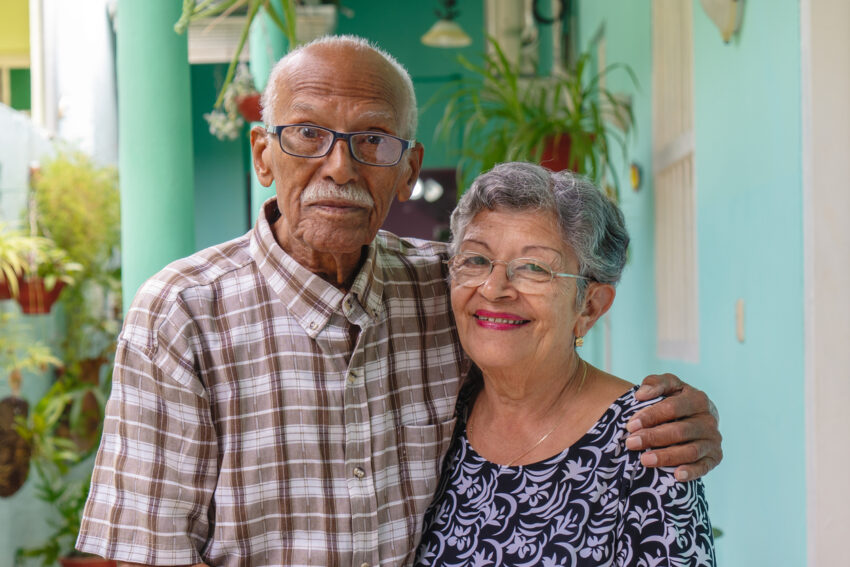
Share On Social!
Have you ever wondered how where you live affects your life expectancy?
Now you can find out thanks to the first comprehensive, US county-level life expectancy estimates.
The analysis, published in Lancet by researchers at the University of Washington and others, estimates life expectancy for five racial/ethnic groups, including Latinos, in 3,110 US counties over 20 years (2000-2019).
Let’s explore what the study found about Latino life.
What Is Latino Life Expectancy?
Nationally, the study revealed that life expectancy for Latinos increased an average of 2.7 years – from 79.5 years in 2000 to 82.2 years in 2019 – during the 20-year study period.
This increase in life expectancy was larger than average (2.3 years) and the highest life expectancy nationally and across most counties.
However, this positive difference for Latinos, compared to their White peers, declined in 42% of counties, the study stated. For example, in Huerfano County, Colorado, Latino life expectancy is 71.27 years, compared to 76.51 years for Whites.
This finding shows there is still “considerable variation” in life expectancy among Latinos by location.
“Gains in life expectancy are noteworthy but stop short of suggesting we’re closing the gap that persists among different racial and ethnic groups,” said Dr. Ali Mokdad, senior author from the Institute for Health Metrics and Evaluation (IHME) at the University of Washington, in a press release.
Why Did Life Expectancy for Latinos Rise?
While the rise in life expectancy is a win for Latinos, study authors state that the increase could be due to the growth of foreign-born Latinos in the US, who tend to be healthier than US-born Latinos.
Foreign-born Latinos have increased 13.7 million from 2000 to 2018, according to the Pew Research Center.
“Lower mortality rates among Latinos compared with non-Latino populations are largely restricted to foreign-born Latino individuals,” the study stated.
Foreign-born Latinos are potentially healthier than US-born Latinos for several reasons, including Darwin’s “survival of the fittest” theory, in that Latino immigrants who can endure the challenges of migration are more likely to be healthy and prevail through hardships.
As a result, they can be both mentally and physically healthier than US-born Latinos who have not faced the hardships of immigration.
“These varied outcomes in life expectancy raise significant questions. Why is life expectancy worse for some and better for others? The novel details in this study provide us the opportunity to evaluate the impact of social and structural determinants on health outcomes in unprecedented ways. This in turn allows us to better identify responsive and enduring interventions for local communities,” said Dr. Eliseo J. Pérez-Stable, co-author and director of the US National Institute on Minority Health and Health Disparities (NIMHD), in a press release.
What Is the Impact of COVID-19 on Latino Life Expectancy?
Although Latinos experienced an average increase in life expectancy during the 20-year study period, they were still impacted by health disparities, along with other racial and ethnic groups.
For instance, Black populations still experience shorter life expectancy than White populations, and the life expectancy among the American Indian/Alaska Native population did not improve during the 20-year study period.
Additionally, during the last 10 years of the study (2010-2019), life expectancy growth was stagnant across all races and ethnicities.
Further disparities were shown by the dip in life expectancy when the COVID-19 pandemic hit the US.
Latinos have been disproportionately impacted by COVID-19 cases and death rates and health inequities since the pandemic began in March 2020.
“Provisional estimates for 2020 show substantial declines in life expectancy overall,” the study stated. “These declines were larger from 2019 to 2020 for the Latino (3.0 years) and Black (2.9 years) populations than for the White population (1.2 years).”
These findings show that further progress in improving life expectancy and reducing disparities is not guaranteed, and we must keep working to limit negative health impacts, especially during crises such as the COVID-19 pandemic.
“The pandemic exposed stressors and weaknesses in local and national systems that continuously put our most vulnerable populations at risk,” said study author Dr. Laura Dwyer-Lindgren of the Institute for Health Metrics and Evaluation at the University of Washington, in a press release. “These findings offer county, state, and federal leaders a unique look at the pervasiveness of health disparities in their respective communities.”
What Can You Do to Improve Latino Life?
With the devastating impacts of COVID-19, local-level data through similar studies will become even more crucial to “address the root causes of poor health and early death among disadvantaged groups in the US, eliminate health disparities, and increase longevity for all,” the study stated.
You can explore an interactive map of the 3,110 US counties analyzed in this study.
The interactive map shows trends for both sexes, all ages, and race and ethnicity for all-cause mortality and life expectancy from 2000 to 2019. Additional county-level estimates by sex and age are available for 21 major causes of death, alcohol, smoking, hypertension, obesity, physical activity, and diabetes.
You can also help address issues of health equity for Latinos and all people.
Select your county and get a Health Equity Report Card by Salud America! at UT Health San Antonio. In your report card, you will see maps, data, and gauges to compare health equity issues, including access to healthcare and social vulnerability to COVID-19, to the rest of your state and nation.
You can email your Health Equity Report Card to local leaders to stimulate community change. Use the data in your materials or share on social media to raise awareness.
Get your Health Equity Report Card!
Explore More:
Health EquityBy The Numbers
1
out of 10
Pedestrians survive when hit by a car at 40 MPH



